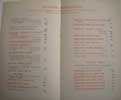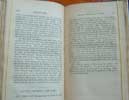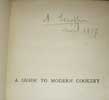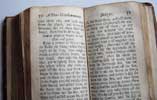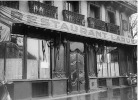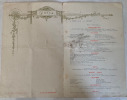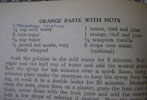A Winstanely Family Recipe Book.
- The Winstanley Family of Old Braunston Hall. Leicestershire.
ITEM 1. 128 x 72 x 12mm. n/d. Full red calf. Intricate guilt tooling. Some pages full many blank. the first 4 pages with script, 10 blank, 4 script, 15 blank, 5 script, 11 blank, 9 script, 17 blank and the last page with script. Very clean. ITEM 2. Fourteen pages of manuscript recipes written in a fine script. They are the property of Rosemary Philippa Winstanley. There is one recipe that is titled a cure for Mr Winstanley. There is one recipe that has been posted to Mrs Winstanley, Braunstone House, Leicester. Housed in a marbled cardboard folder. In fine condition.
- This little beautifully bound volume was the property of the Winstanely Family of Old Hall, Braunstone. Rosemary Philippa Winstanely born in 1914 at Braunstan Hall married Robert Poore. Their son Andrew Phillip Poore, born 1951 (A long standing friend of many years) is the one who gave me this book, having previously given me the Winstanley three manuscript recipe books that can be viewed under item # 11157 on this book-site. The book had been in the same lot of Andrew's mother's possessions he received after she passed away on the 6th Oct. 2006 at Brown Edge, West Malvern, Worcestershire. This book is something of a mystery. It has no name nor date. It has recipes of 1-9 pages, entered all in the same fine cursive script, but in five different places, starting at the first page and finishing at the last. Many pages are blank. There are no dates but some recipes are attributed to some names. The gilt tooling on both sides of the binding and spine is intricate, delicate and very appealing which only adds to mystery. What was it originally bound for.? Hard to imagine its sole purpose was always for Kitchen recipes. It's very clean appearance does not support the idea that it spent any time in a kitchen but rather untouched in some forgotten nook somewhere. The Braunston land was purchased by the Winstanley family circa 1651. Old Braunston Hall was built circa 1775. Has this book been around since then.? A mystery. The other manuscript recipes in the marbled folder adds to the mystery, as they appear to be in different hand writing and have been given or sent to Mrs Winstanley. She appears to have been a prudent collector of recipes, and they have all been kept in good condition. Two fine items.
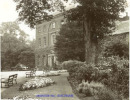

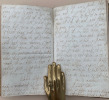
click on image to enlarge

Antiquarian category
ref number:
10927 



